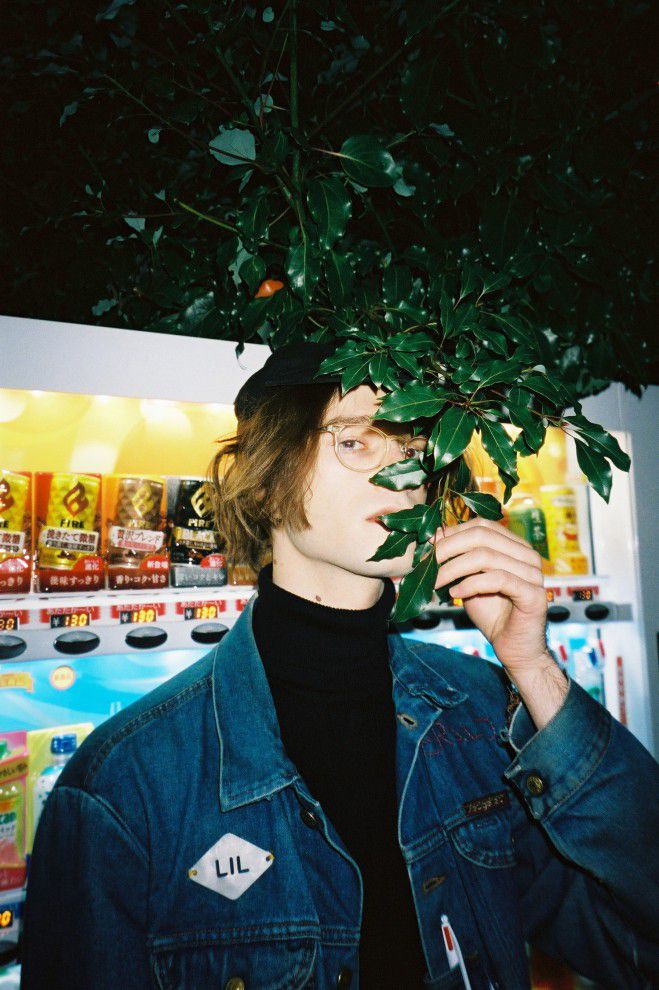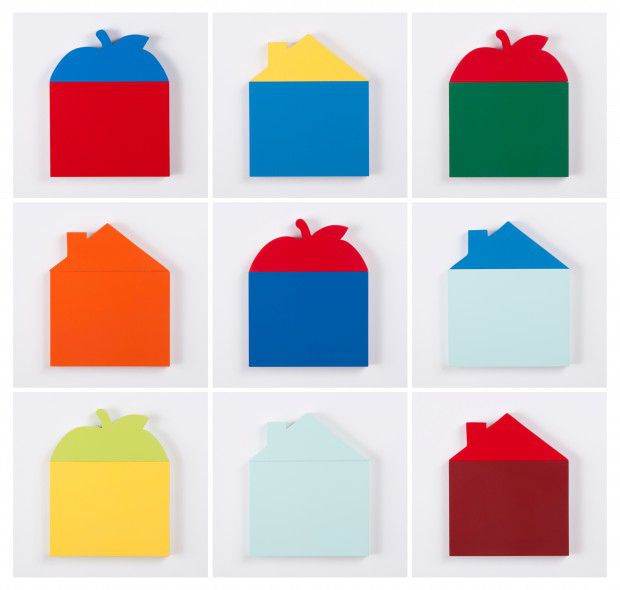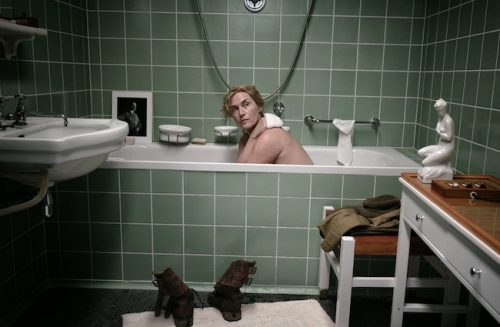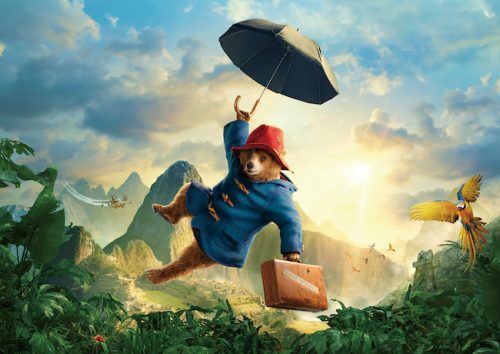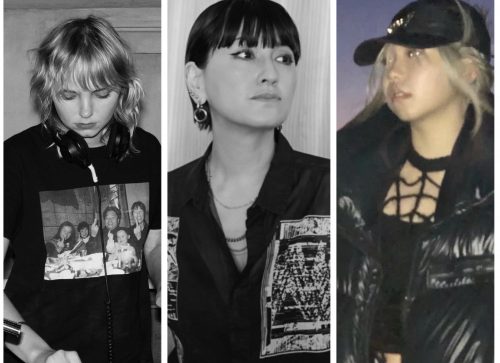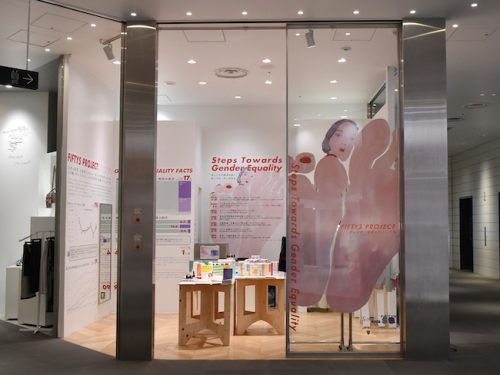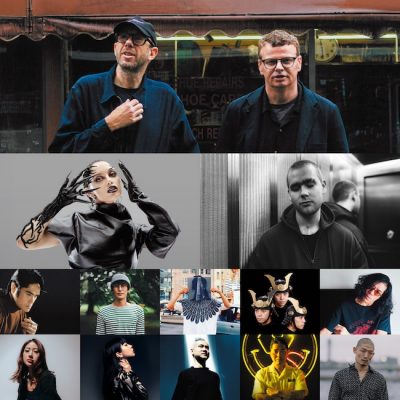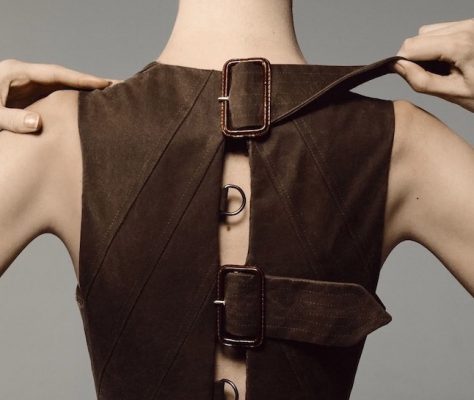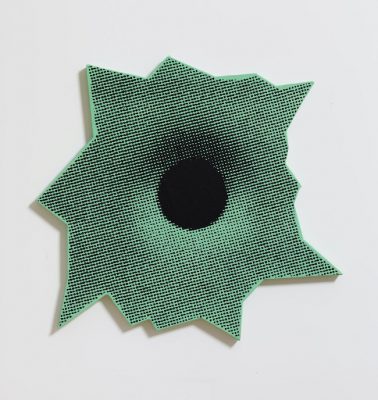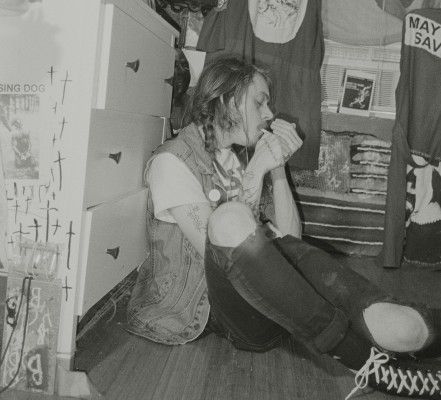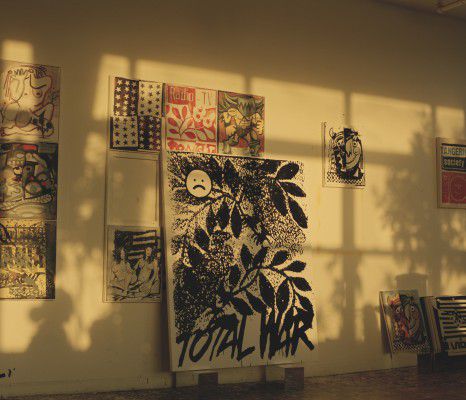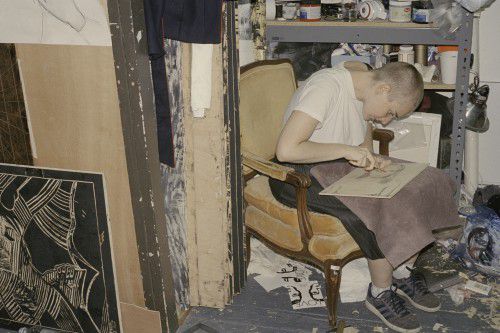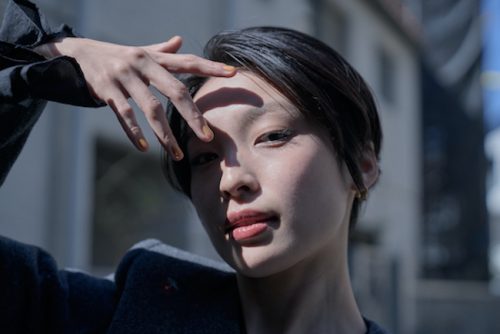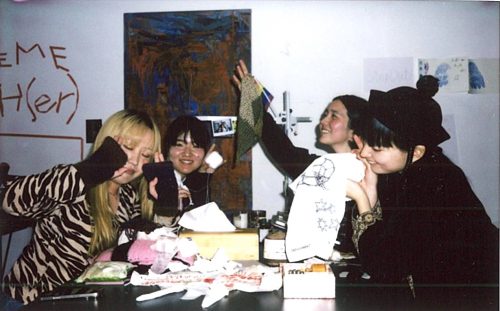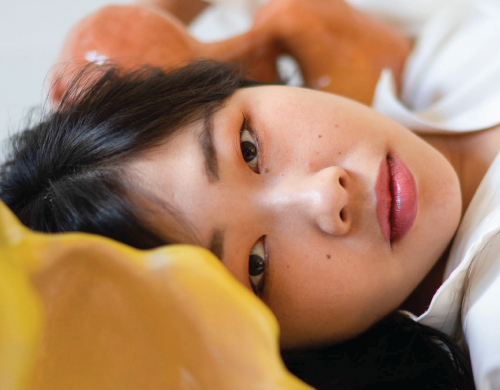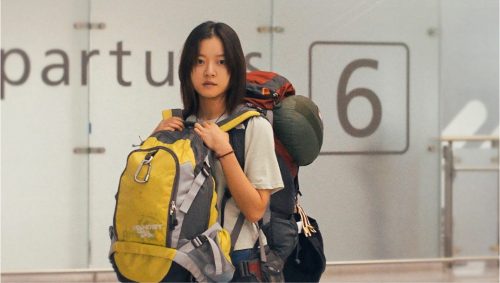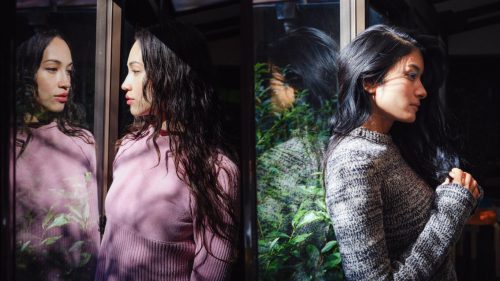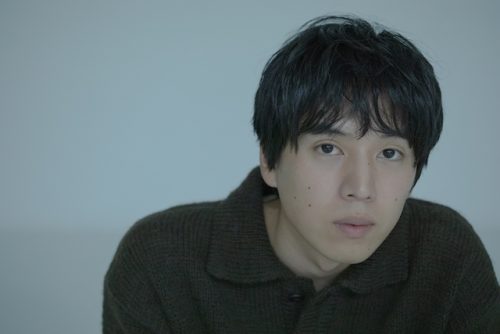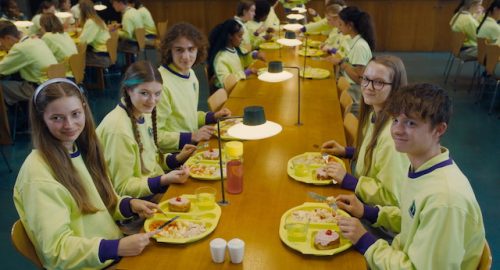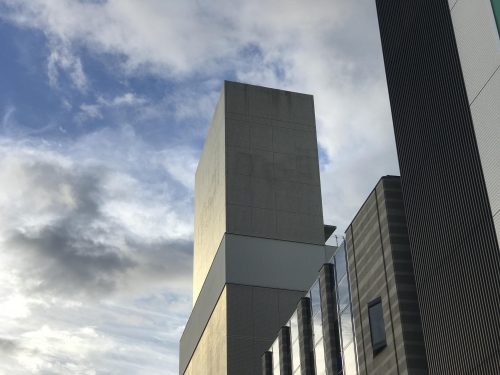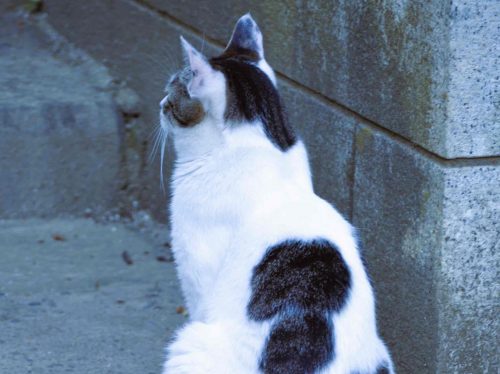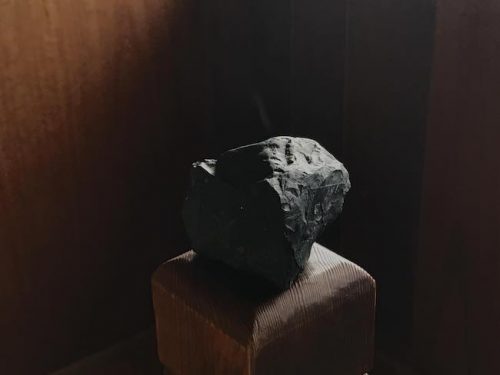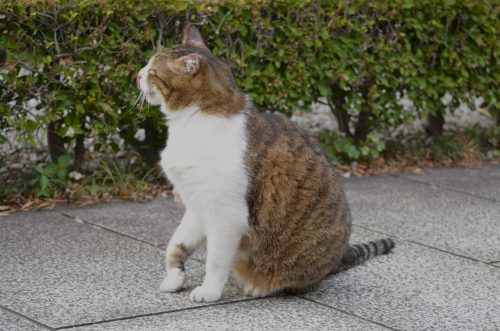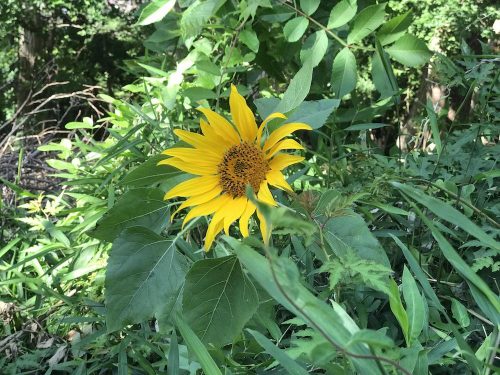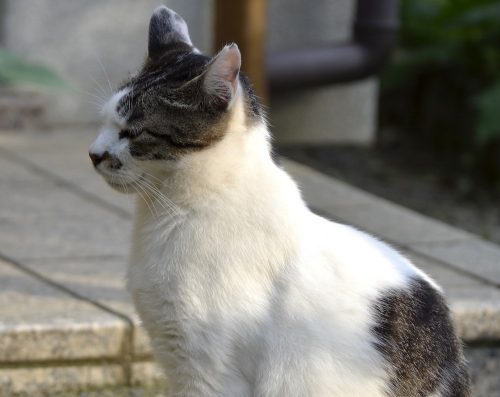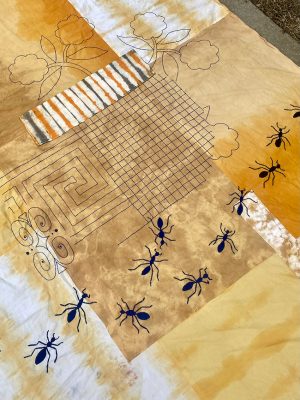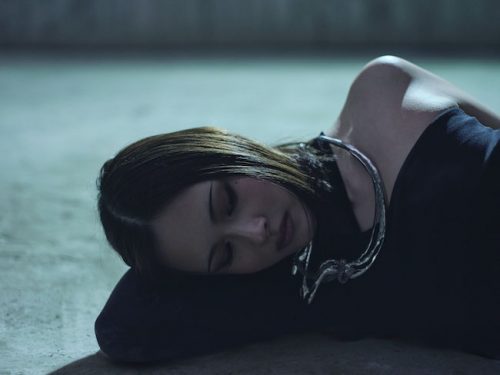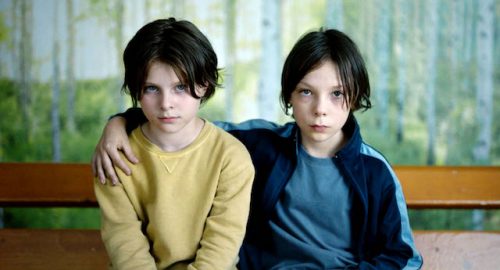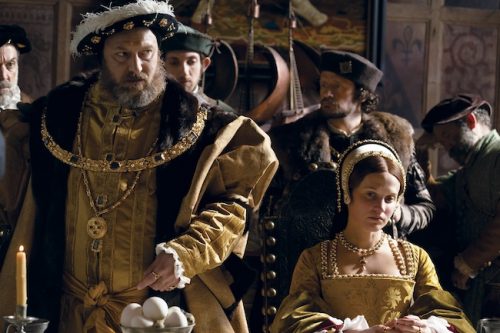溶かしたクレヨンを用いた独特のペインティングや文字を組み合わせたドローイング作品で知られるAlexander Muret。23歳にしてエディ・スリマンによるイヴ・サンローランのラストコレクションでアートワークを起用され、自身もモデルをつとめたことで話題を呼んだが、若き成功者というハイプなイメージとは裏腹に、気取りもなく地に足のついた発言が印象的だった。
ーーあなたのHPを見たときに、ドラえもんを見つけて笑ってしまいました。ドラえもんが好きなんですか。
Alex「(笑)。うん、大好きだよ。ドラえもんはすごくキュートだ」
ーーシンプソンズも見かけましたが、私はバートが特にお気に入りです。
Alex「彼はいたずらっ子だよね。あのファミリーは全員楽しいから好きだよ」
ーー元々アニメーションが好きなんですか。
Alex「アニメーションは好きだけど、画家だから静止画の方が好きかな。多分将来的には動画の人気がどんどん上がると思うけど、個人的にはやっぱりスチールの方が好みだな」
ーーなるほど。小さい頃から創作をするのが好きだったんですか。
Alex「塗り絵やドローイングなどなにかしらのアートをいつもしていたよ。でも、生来のアーティストというわけではなかった。家族にアーティストが多いわけでもない、すすめられたけでもない。でも17歳でアーティストになることを決めたんだ」
ーー決めてから、実際にどのようにして始めたんですか。
Alex「17歳の時に決めたけど、始めたのは19歳。最初は自分で材料を買って、家でひとりで制作していたんだけど、すぐ散らかしちゃってよくないから小さなアートスクールに通い始めたんだ。毎日小さなテーブルで作業をして、いろんなアーティストに囲まれていた。アジア人が多くて、18歳から80歳ぐらいまでの幅広い年代の人たちがいて、とてもクールだった。先生たちもアーティストだったし、みんな経験豊富でおもしろくて、デッサンや彫刻などのクラシックなアートをやっていた。そこで教育を受けたんだ」
ーー溶かしたクレヨンを使い始めたきっかけは?
Alex「蝋画というオイルペインティングの前から行われていた古い方法があるんだ。昔の人たちはワックスと色素を混ぜたもので絵を描いていた。それに興味を持って習ったんだけど、自分が既に持っていた素材の中からクレヨンを見つけて、クレヨンはワックスだし、安いから使ってみようと思った。アートの材料はとても高いからね。で、実際使ってみたら、とても気に入ったというわけ」
ーーそれはもしろい。
Alex「ある日、アート用品店で子供用のセクションを見かけて、『大人だけど、こっちの素材を使ってみよう!』って思ったんだよ」
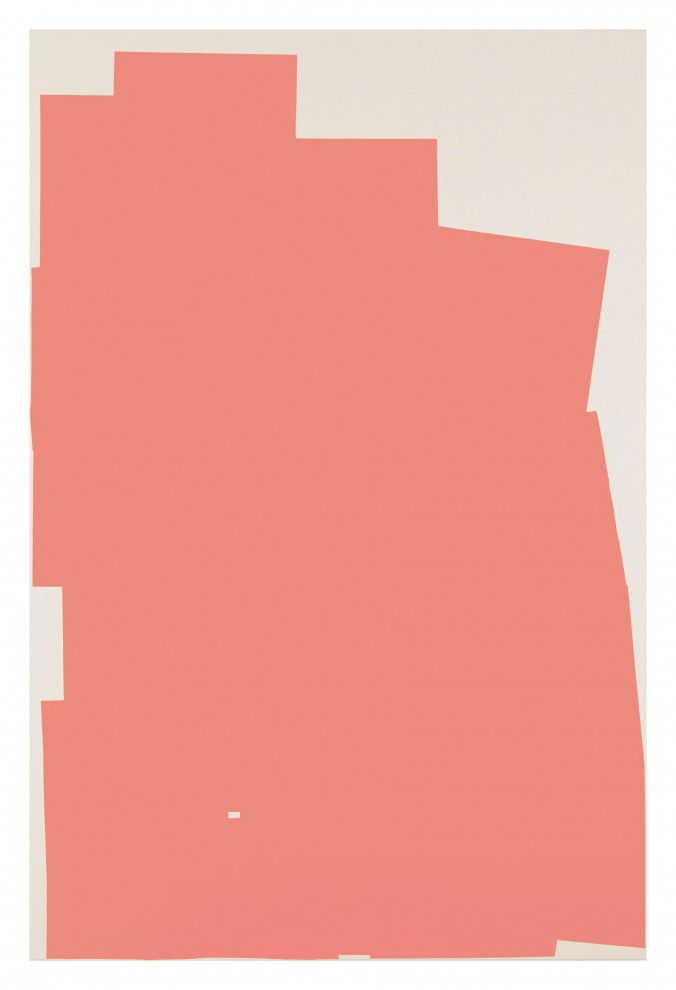
ーーいろんな線、丸、四角を使った作品ですが、どうやってこのスタイルに辿り着いたんでしょう。
Alex「少し子供っぽいというか、シンプルでベーシックな物が好きなんだ。物事の本質はみんなの意識内や言語の中にあると思う。そうした言葉や形の双方にインスパイアされた結果、こうなった。最初に言葉を色々書いていって、その連なりを基に形を作っていってアートにしていたりね」
ーーでは、丸と四角の違いについてはどう思う?
Alexe「とても大きな哲学的な質問だね。哲学的じゃない答えをすると、同じだけど形が違うだけだと思う。違いより共通点の方が目立つかな」
ーー多くのアーティストが線や丸を使う中、誰が見てもわかるような個性的なスタイルを見つけた方法は?
Alex「 ひたすらに興味のあることだけをやっていたら、自然とスタイルが生まれて発展していった。例えばあるアーティストやその作品群に興味を持ち学んでいくと、いつの間にか自分らしい形ができる。自分が作っているものの共通点に気づき始め、同じことを繰り返していくうちに自分の癖がわかるようになる。アートだけじゃなく、日常生活の中でも、自分を客観的に見て、自分の習慣に気づくことが多いよ。起きて外に出た時に、5日間連続で9:30に起きたことに気づいたり、毎日午後2時にコーヒーを飲んでいることに気づいたりね。アートや生活の中で、共通点を見つけるんだ。僕は習慣を持つことを大切にしているし、毎日同じことを繰り返す。習慣づけ、繰り返し、しっかりとした形式と決まりを決める。それがアートにも反映されているのかもしれない。制限というのが、自分の世界観にとって大事なんだと思う」
ーー地上絵などの大きなアートにはインスパイアされますか。
Alex「地面に描くことは考えたことないけど、キャンバスにはとても惹かれる。アートをある面積に収めるためのものだからね。境界線は大事だ。複雑な世界を理解するためにも、紙上の四角に収めるとわかりやすくなると哲学者も言っている。紙に言葉を描いたり、キャンバスに絵を描いたり。自由に溢れ出させるより、収めることも大事だと思うんだ」
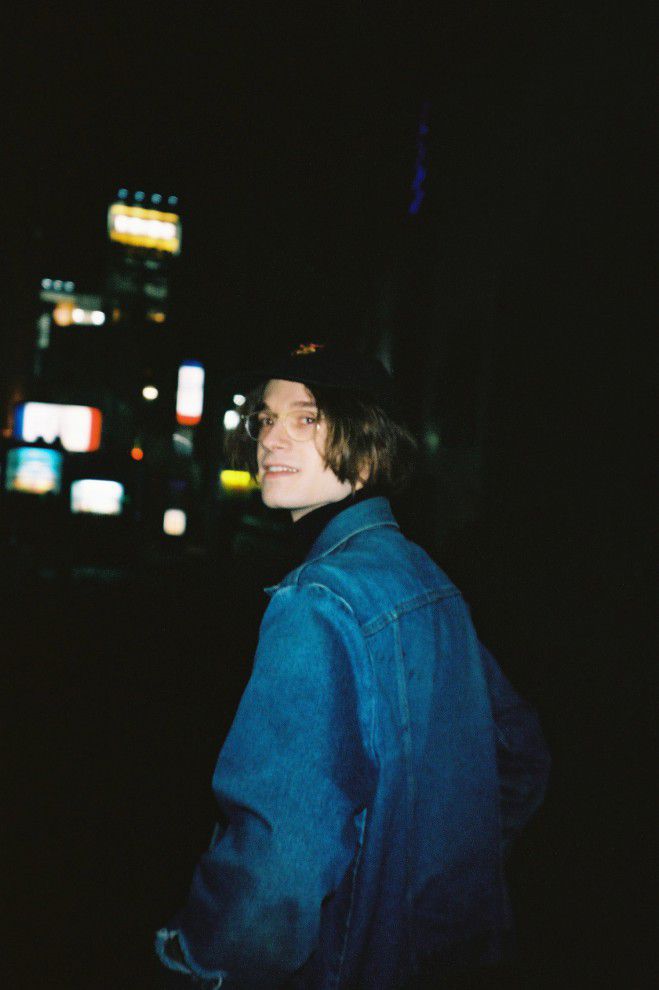
ーーHedi Slimaneとのコラボレーションはどうでしたか。彼のことをインタービューしたことがあるんだけど、とてもいい人ですよね。
Alexe「衝撃の連続だったし、ワクワクしたし、全てが素晴らしかったよ」
ーーファッションとのコラボについてはどう思いますか。ファッションをアートに取り入れようと思います?
Alexe「デリケートな関係だと思う。ファッション業界では季節毎に新しいスタイルが必要だから、アートを利用したら簡単に斬新な物を作れると思って乱用する人もいると思う。でも、Hediのように誠実にアートとコラボをしている人もいる。彼はプロダクトのリリースばかりに執着しないで、ちゃんとこちらの意見を尊重してくれたんだ。もし僕が気に入らない部分があったら、それも聞いてくれた。Commes des Garconsのアートの使い方も立派だと思うよ」
ーーHediとコラボしてから特にそうですが、あなたはSNSでもいろんな人に注目されていますよね。インターネットが及ぼすアートへの影響についてどう考えていますか。
Alexe「実在していて影響力も強いから、アーティストはそれについて知恵をつけた方がいいし、利用すべきだと思う。そのほうが有利になるし、無視はできないよね。個人的にはSNSなんてないほうがいいと思うし、パーソナルなブログの時代に戻りたい。毎日30分ぐらいしか見ないんだ。浅く空っぽなものより、意味のあるものが好きだからね。でも、現代社会においてSNSは大きな存在になっているから、うまく使ったほうがいい」
ーーなぜあなたはペインティングをするのか、理由を聞かせてください。
Alex「アートと人の関係は特殊だよね。直接的でフィジカルな関係でもあり、他社の気持ちを想像するような関係でもある。だから、人々はそのアートを作るという行動と表現力の両方に繋がれる。全ての人は表現したい願望があるんだけど、ペインティングは目に見える中で一番
まっすぐな表現方法だと思うんだ」
ーーどのようにしてアイデアを思いつきますか。
Alex「切迫。切迫感と不安は繋がっていると思うんだけど、なにかを早く率直に表現しないとって焦るときがあるんだ。それかな」
ーーあなたにとってペイントは?
Alex「表現」
ーー5年後は何をしていると思いますか。
Alex「人里離れた場所で、文章を書いていると思う」
ーーよくLAに行くようですが、一番最近行ったのはいつ?
Alex「今年の夏に行ったよ。6月の頭から7月の中旬まで」
ーーLAとNYの共通点と違いを教えてください。
Alrex「スタジオの広さが全然違う。LAで友達とスタジオをシェアしているんだけど、すごく広いんだ。NYではあの広さのスタジオは手に入らないよ。たくさんの部屋もあるしね」
ーー向こうのアートシーンはどうですか?
Alex「LAの方が各地に散らばっているかな。イベントの数も1日に1個とかで、NY より少ない。移動距離が長いからかもしれない。アーティストは増えているけどね。こっちは、毎晩10箇所くらいで展示会のオープニングやパフォーマンスなどの様々なイベントをやっているからね。NYでは常に何かしらが起きていて、ついていけないよ」
ーーLAに引っ越す予定はありますか?
Alex「それはない。NYを愛してるからね」
ーー今後の予定は?
Alex「NYについてのペインティング・シリーズを今作っているよ。あと『The Apparition』という本を東京の出版社(Utrecht/Now IDeA)から発売するんだ。2月に日本人アーティストのGoichi Hosakaとショーをしたんだけど、それについての本なんだ。彼はとても才能があるよ。この本は冊数限定で新しい文章も載るよ」
ALexander Muret
http://westfourthstreetcourts.com
photography Takuya Nagata
interview Ryoko Kuwahara
coodinator spinning books http://spinning-books.com
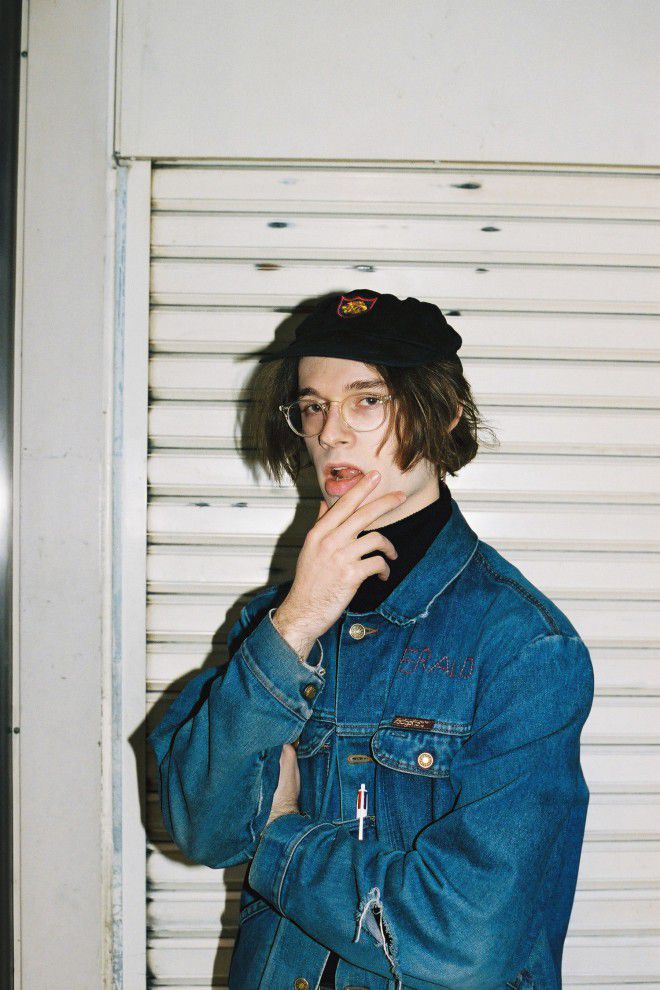
ーーI saw your website and found Doraemon and thought it was funny. Do you like Doraemon?
I love Doraemon. it’s so cute!
ーーAnd the Simpson’s. They’re my favorite! I love the Simpson’s, especially Bert.
They’re so fun. He’s a troublemaker. I like all of them, they’re all fun.
ーーDo you like animations?
I like animations. I like still images more though maybe because I’m a painter. I think maybe in the future moving images will be more popular, but still is just my favorite.
ーーHave you liked creating art since you were little?
I was always doing some type of art maybe coloring or drawing. I wasn’t really an artist from the get-go. My family’s not full of artists and I wasn’t encouraged to be one, so I decided when I was 17.And 19, I started doing it. Well, first, by myself. I just bought materials and tried to navigate just making it myself in my apartment. It got so messy all over the place and it wasn’t good, so I started going to a small art school on 57th street. You don’t get credits. Very cheap. You get a little table to work on and you can just go there every day, so I started going there and surrounding myself with these artist. Many of them were all Asian and my peers ranged from like 18 to 80 years old. Very cool. It was very exciting and the professors were artist themselves. Very experienced, very interesting, very classic with figure drawing, sculpture, things that are classic art. So, I got an education there.
ーーHow did you discover using melted crayons?
First, it’s because of this art form called encaustic painting that came before oil painting. Before people painted with oil, they painted with encaustic, which is wax and pigment mixed together, so it’s an old art form and I was interested in that. I learned that and it attracted me and then from there, I already had these tools of wax and hot clay and very melty things and I also had crayons and I was like, “Oh, that’s wax! So cheap!” And art supplies are expensive, so I started using crayons and I liked where it was going and what it was communicating.
ーーThat’s an exciting reason!
I was in the art store and I saw the children’s section and just went to there one day instead and I said, “I’m gonna use these supplies instead as a grown up artist.”
ーーSounds great. So you use lines and circles and rectangles, but how did you come to make this kind of art?
I think I’m interested in very elementary things that are maybe childlike or simple things. I look for the essence and shapes and lines that are part of everyone’s psyche or language. Words really inspire me as far as imagery, and shapes as well, so it came together from there.
ーーMany artists use lines and circles, so how do you make your own unique style that people can just look at and like recognize as your’s?
I just worked on what i was interested in and the style came naturally. Or if you’re interested in an artist or a body of work from another artist you study that, you inevitably come to something of your own. So, I think it just came from just doing what I was interested in and it developed on its own. I started to notice the patterns of what I was doing. I constantly notice my own habits. I’ll do things, I’ll do things, I’ll do things and then, I step outside of myself and look at myself and say, “What are the patterns here?” I do that not just with art, but with life in general. If I’m waking up at like 9:30 every day and I step outside: “Oh look, at this interesting pattern! It’s 9:30 and I’ve been doing that for the past five days!” “Oh look at that, I end up drinking coffee at 2 pm every day!” Just noticing patterns in art and in life in general.
I’m really drawn to routine, so I also have a routine. I do the same thing every day. I like routine and repetition and structure and just these solidified rules, so I think that’s also made its way into the art world. Limitations and restraints. Yeah, I think that’s part of my way of looking at the world.
ーーAre you inspired by huge art like Nazcas lines?
That’s interesting. I’ve never thought about doing something on earth. I am very attracted to canvases though or just something to contain the art. I believe borders are helpful because for example, to even understand the world, there are so many abstract concepts and they’re very hard to understand, but some philosophers say that putting them on a page in a rectangle defines it. I see the effectiveness of putting words on a piece of paper or putting paint on a canvas. I think containing is actually an important part of art, instead of letting it flow over. Containing it in some way is helpful.
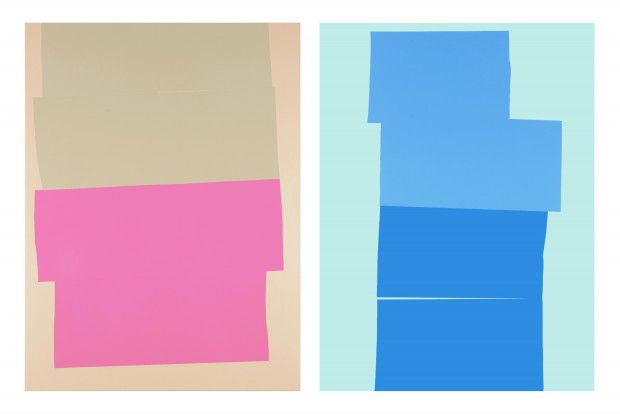
ーーWhat do you think about the differences between circles and squares?
Hmm, that’s a big philosophical question. I think an unphilosophical answer is that they’re the same, except that they’re just different shapes. I think unphilosophically. They’re the same and I see them in terms of similarities than differences.
ーーYou collaborated with Hedi Slimane. I’ve interviewed him before, and he was so kind. So, how was it?
Um, it was surprising and exciting and great in every way.
ーーWhat do you think about collaborating with fashion?
I think it’s a delicate relationship. I think fashion is trying to use art as an easy way to have creativity because the fashion commands something new every season, so getting art involved is almost an easy way. Some fashion brands do it in a very integrity-like way, like Hedi. When we worked, he wasn’t just trying to pump out a product. When i said I didn’t like something, he said, “okay.” So I think some brands abuse, but some brands use it in a really nice way. For example, Comme des Garcons. Rei Kawakubo uses art in fashion in a very respectable way and some just brands just pump it out.
ーーEspecially after the big show with Hedi,many people follow you and want to know about you and your work, but what do you think about the influence of the internet on art, especially networks like Instagram ?
I think because it exists and is a real force, an artist at least needs to acknowledge it and probably use it because it’s an advantage. It can’t be ignored. I would personally prefer for it not to exist and go back to when there were personal blogs. I liked that. That was cool. I personally dislike it and avoid it as much as possible.I probably have it open for like 30 min a day because I prefer depth and content with intention. But yeah, I think it needs to be acknowledged and used if you’re an artist because it’s a reality of the time.
ーーWhy do you paint?
I see painting as a very specific window and relationship to a person. It’s a gesture, like writing. It has a physical relationship and a vicarious relationship, which means people can connect to a gesture connect to the human action of making art and they also connect to the expressive quality of painting. I think every person has the desire to express and I think painting is the most immediate connection to expression that one can view.
ーーHow do you usually come up with ideas?
Urgency. I think urgency and anxiety are almost connected and so anxious and eagerness tie into a need to express something urgently and to do it in a fairly immediate way. So, immediacy and urgency. That’s what I’d say.
ーーWhat is paint to you?
Paint is expression.
ーーWhat do you think you will be doing in five years?
Five years, I will be writing in recluse. Far away in isolation.
ーーSo you often go to LA. When was the last time you went there?
It was during this summer, early June to mid-July.
ーーWhat are similarities and differences between LA and NY?
The amount of space to work in is so different. I share a friend’s studio in LA and it’s huge. That’d be impossible to get in NY. Yeah, so space because I have so much room to work there.
ーーHow about the art scenes?
It’s more spread out there. And maybe there’s less events going on in LA, it feels like one event per night. And I notice that it’s usually not too many things in LA, I think, because of the distance. But The popularity is definitely growing. In NY, 10 events per night, like exhibition openings and performances and more. I feel like there’s always so much going on here. I can never keep up with everything.
ーーDo you have plans to move to LA?
No, I love NY.
ーーDo you have any exciting news?
Yeah I’m working on a series of sign vinyl paintings in NY, and there’s a book called Muret Now Hosaka Idea by Utrecht/NOW IDeA in Tokyo for an exhibition that was in February. It’s limited edition, but I don’t know how many copies yet. I have to talk to the publisher. They’re working on the book right now because there was a show there in February with Japanese artist Goichi Hosaka. Very talented. We had an exhibition in February, so there’s gonna be a new book with new text.
Alexander Muret
http://westfourthstreetcourts.com
photography Takuya Nagata
interview & edit Ryoko Kuwahara
coordinator spinning books http://spinning-books.com
